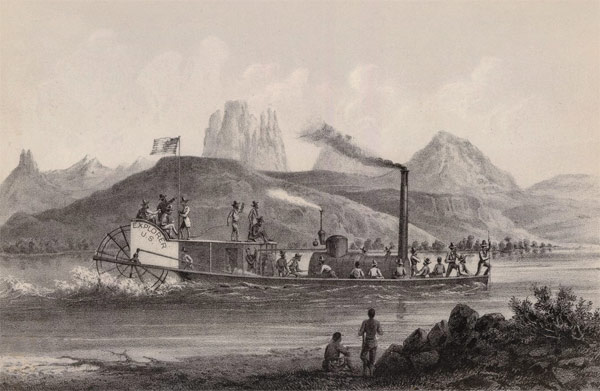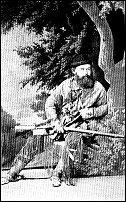Jerry Fohrman presided with 28 participants.
Guests: Gabriel Guimares joined us from Brazil. He asked about the COVID19 effects here in our area and commented that in his area businesses closed for a couple of weeks but are now open but Schools/Universities are still closed. Sarah Tuberty also joined us as she is visiting Kathryn and may become a speaker soon.
Art led the invocation and AJ led the Pledge.
John Stewart’s Thought for the Day: “No matter what comes my way, whether the sky is cloudy or gray, I will smile in Rotary today”
Announcements: Bud thanked Jerry Hulm for coming on board as a second ZOOM Master for the club. Also thanked AJ for being able to recruit Dave Lewis to speak this morning after a last-minute cancellation. Bud reported that St. Michaels is not planning to re-open any time soon so he is looking into alternative options at least until St. Michaels will re-open. Watch for more information.
Jerry was default Sgt. again and invoked the standard $3 PP to be added to bills. Then after happy Bucks, he added $2 more. Roy Loo paid because he is getting a Haircut tomorrow! Glen Hammond noted that Roy Loo had stolen his thunder today by joining in last! Put in a couple of buck for Roy getting his HC. Jane Anne and Jim H were happy because they were able to go to a restaurant last night for dinner. John White for his first Taco Tuesday in months. Clent because he finally finished his privacy fence at home and also for restoring a ’61 Signal Red Comet he bought when 16. Josh told his dad to finish the restoration before he dies because Josh doesn’t want to deal with it! LOL!
AJ introduced our speaker Dave Lewis and thanked him for being a good friend and agreeing at the last minute to speak today. Dave remarked that he was once part of a conference where the planners had debated having a keynote speaker or not. Finally, one of them proposed, “Let’s get Dave Lewis to speak, he will be the next best thing!”
Dave is a longtime volunteer at Sharlot Hall Museum and Coordinator of the Prescott Indian Art Market (PIAM) held there each year (Coming in the Fall this year). He is also a long standing volunteer ranger at the Grand Canyon and thus interested in Canyon and AZ history.
Dave’s presentation was about early exploration of Arizona and specifically on the Lt. Joseph Christmas Ives Expedition on the Colorado River. This area in the 1850s was Valencia, NM and the Colorado River in 1857-58 was largely unknown. There were no Anglo settlements in this area except a small post at Yuma to support river traffic and crossings and some small settlements at Tucson and Tubac. California was developing nicely due to the Spanish/Mexican influences but Arizona was largely unexplored and unknown except as an area to get across to reach California where gold had been found. There had been some military expeditions across Arizona to find the best ways across but little other exploration. The Colorado River was still a mystery. The character of the land, peoples and river were largely unknown. The army decided to launch an exploration expedition of the river to find out how far up it was navigable. This was deemed important because President James Buchanan wanted more control over Utah. The Mormons in Utah were trying to establish their own country. There had been some military skirmishes and an all-out war was feared. The army wanted to know if the river could be used to move units and supplies up to Utah to support any campaign there.
Joseph Christmas Ives (Born on Christmas day, 1828) from a poor family but able to be educated at Yale and West Point had been commissioned a lieutenant in the Army

Corps of Topographical Engineers. In the 1850s this Corps was the equivalent of modern-day astronauts as they were on the cutting edge of the exploration of the unknown areas of the country. Ives was chosen to lead the expedition on the Colorado river. He was directed to get a boat and organize a group to run up the river. He had a boat named the “Explorer” built in Philadelphia, PA. It was 54 Ft. LOA, single deck, sternwheeler. It was then disassembled and shipped around South America to California and re-assembled near the mouth of the Colorado River. It took them 5 weeks to assemble it and get it into the river and head up to Yuma. As a single deck craft the men were exposed to the elements but also to the embers from the engine smoke stack. So there was lots of singed clothing and burns along with the distinctive odor of burning hair. After they left Yuma they did not get out of sight before they ran aground. The boat was heavy and low in the water so grounding was often and slowed them down a lot. The Indians along the river could walk faster than the “Explorer” and thought it was the funniest thing they had ever seen. A Chief finally volunteered the services of one of his tribes experienced river runners and this helped them get along up the river.
Ives had selected good men for this expedition. John Strong Newbury was a pre-eminent geologist of the day, Baron F.W. Von Egloffstein was a great cartologist, and Baldwin Mollhausen, artist proved to be very good at capturing the events and surrounding geology of the river. They went up the river as far as they could. At Black Canyon, just below present day Hoover Dam, they had to send the boat back and continued overland looking for access to the river. They found a way in at Diamond creek not far from present day Peach Springs on the Hualapai reservation. It is thought that they were the first Anglos to get to the bottom of the canyon. Mollhausen had been taught to capture types and look of the rocks when included in his pictures and he got it right. His sketches and water colors are very detailed and true to the topography. They continued overland East to probe for other access points and were able to get down to Havasupai. They then continued on to the present-day Flagstaff area then on to Fort Defiance at Window Rock where they disbanded.
The great accomplishment of the expedition was Ives written report which incorporated information from Newbury and pictures from Mollhausen. It was very detailed and accurate as to the topography and geology of the area. Ives is remembered and criticized for his statement in the report “that this area is altogether without value and the only thing to do there is to leave”. His report is well written and he was the first person to apply architectural terminology to the formations in the canyon. His descriptions are spectacular and brilliant thanks to the contributions of Newbury, Egloffstien, and Mollhausen. Newbury found the area to be a geologist’s paradise and he developed a view of the West that was almost a bird’s eye view. Seeing the area as a whole and was the first person to advise that the Grand Canyon was the result simply the work of erosion from flowing water.
Following this Ives was in Washington DC supervising the construction of the Washington Monument. When the Civil War began he went South and worked as an engineer for the Confederacy rising to the rank of Colonel. After the war he was back in the North. He died in New York City in 1869. One hundred years later, a

brownstone was being demolished and a leather portfolio was discovered in a wall. It held 41 of the Mollhausen sketches and paintings from the expedition. They are now in the Amon Carter Museum in Fort Worth, Texas. Mollhausen had returned to Potsdam, Germany where he liked to walk around in his buckskins and wrote fiction novels about the American Indians and the West. Most of his works were destroyed in the bombing in WW II. Baron Egloffstein went on to finance and lead a cavalry company in the Union army during the civil war.
The Ives report was an important resource for J.W. Powell and other Colorado River explorers who relied on the detailed information on the geology, hydrology, and the native peoples along the river.